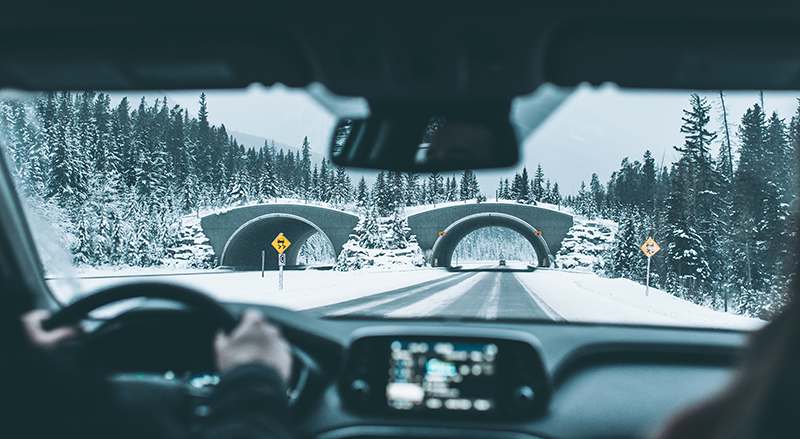Driving in the winter can be intimidating. It can even be downright scary. Ice, snow, and cold temperatures can leave you without traction and stuck or sliding. They can even leave you with a car that won’t start! Don’t worry, here at NAPA Canada, we’re the winter experts. And we can tell you how to drive in the winter.
Some of us learned to drive in a snowstorm, but most of us spent months or even years driving in good weather before experiencing the joys of winter. It’s ok, driving in a blizzard is a lot like driving on a sunny day. You just need to make the right adjustments.
The biggest danger of winter is low traction. Snow and ice mean skidding. The best way to help stop skidding in its tracks is a set of winter tires. Winter tires are designed with rubber compounds and special tread patterns that are much grippier in ice and snow. They also give you more traction when it’s just plain cold.
But winter tires aren’t enough to cancel out physics. Frost on the road means there is less grip. So, reduce your speed when it’s slippery out. Accelerate gently and brake gently. And if you feel the brake pedal pushing back at you, push harder! Your car is supposed to do that. It’s ABS system noise and taking your foot off won’t help you stop.
If you find yourself skidding, ease off of the accelerator and steer into the skid. Look where you want to go, even if it’s not where you’re currently going.
Don’t use cruise control when you’re driving in winter conditions. The computer will try to maintain speed when your tires start to spin and that can cause you to lose control.
Winter visibility can be a challenge. It looks cool when your high beams light up a nighttime snowstorm like a spaceship in hyperdrive, but it doesn’t help you to see. Low beams or fog lights can be more effective, throwing light under the snow instead of right through it. Treat snow like fog and reduce your speed even more when you can’t see down the road.
Keeping your windows clear in the winter is also critical for visibility. If your windows are fogging up, use your defroster. The front defroster uses the air conditioning compressor to dry the air and clear your glass faster. If your window is taking forever to clear, your A/C might need service. Your Redwater NAPA AUTOPRO can help get your glass clear again.
A rear defroster uses electrical current through those lines on the glass. They can get damaged, though, stopping the system from working. If you can see a break in the lines, a rear defroster repair kit can help. If you can’t find the break, it might be time for a trip to that NAPA AUTOPRO specialist.
A handheld scraper is the best option for clearing the outside of the glass. Don’t pour hot water on the window—it worked on that viral social media clip but it will probably shatter your glass. Winter wiper blades are another key item, designed to stay free of snow and ice so they can wipe your windshield more effectively. Pair them with winter washer fluid so you aren’t adding ice to your glass on a cold, wet, and salty winter drive.
The last things you’ll want for winter driving are for when everything goes wrong. Sometimes, despite your best efforts, you can still end up in a snowbank. If this happens, you’ll be glad you had a full tank of gas while you wait for rescue. Your car battery is more likely to fail in the cold; get it tested before winter so it’s reliable when you need it to be. An emergency car kit can also be crucial to help you stay safe and warm.
Now get out there and have some safe winter driving fun!
